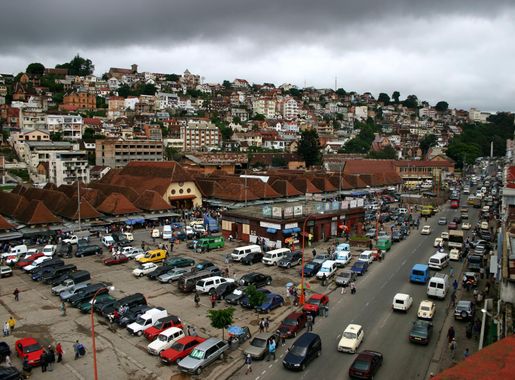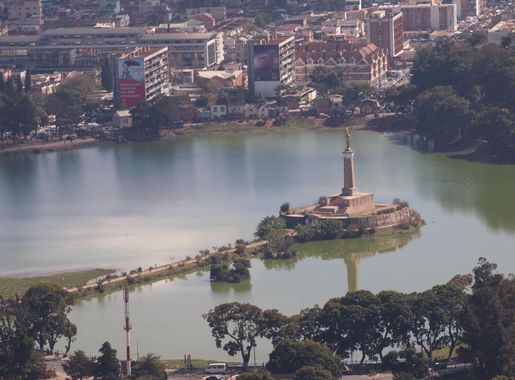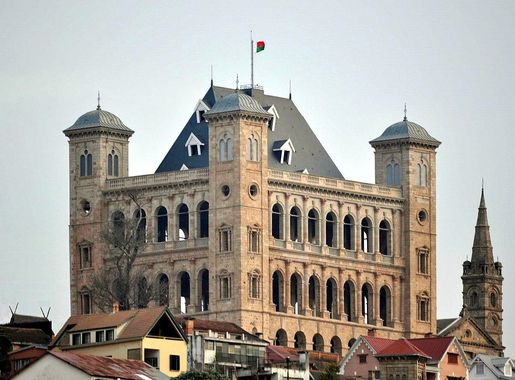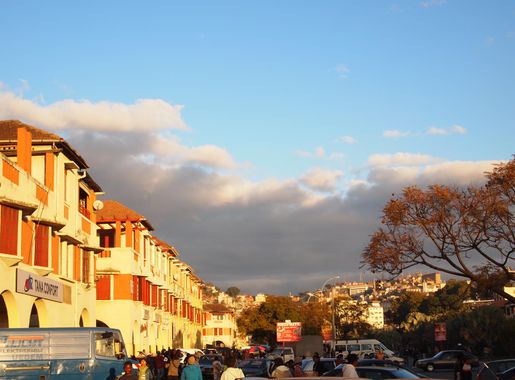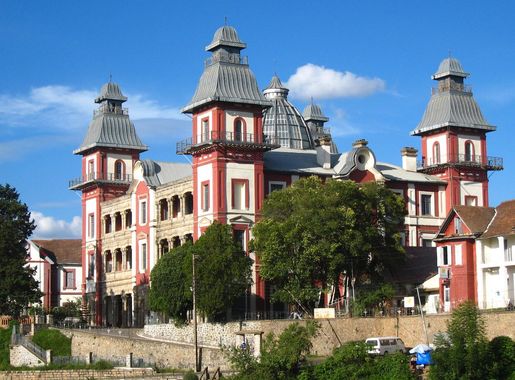
Ampefiloha: The Cultural Heartbeat of Antananarivo
Discover Ampefiloha in Antananarivo: a vibrant neighborhood where history, culture, and urban life converge, offering a unique and unforgettable Malagasy experience.
Ampefiloha, nestled in the bustling capital of Antananarivo, is a vibrant neighborhood that blends the old with the new. Known for its rich cultural heritage and dynamic urban life, Ampefiloha offers tourists a unique glimpse into the soul of Madagascar. The area is replete with historic buildings, local markets, and eclectic eateries, making it a must-visit for any traveler seeking to experience the genuine essence of Malagasy life. Wander through the streets of Ampefiloha to discover a tapestry of colors and sounds. The local markets are a hive of activity, with vendors selling everything from fresh produce to handmade crafts. This is the perfect place to pick up a souvenir or two while mingling with the friendly locals. Don't miss the chance to try some traditional Malagasy street food; the flavors are as diverse as the culture itself. For history buffs, Ampefiloha is home to several significant landmarks that offer a window into Madagascar's past. The neighborhood's architecture reflects a blend of French colonial influences and traditional Malagasy styles. Take a leisurely stroll to admire the unique building facades or visit one of the local museums for a deeper dive into the area's history. In the evenings, Ampefiloha comes alive with music and dance. Many local bars and clubs feature live performances, showcasing the island's rich musical traditions. Whether you're looking to relax with a drink or dance the night away, Ampefiloha's nightlife is sure to leave a lasting impression.
Local tips in Ampefiloha
- Visit early in the morning to experience the local markets at their liveliest and to snag the freshest produce.
- Carry small denominations of the local currency, Ariary, as many vendors in the markets do not accept cards.
- Wear comfortable walking shoes as the best way to explore Ampefiloha is on foot.
- Try the local street food, especially the famous 'Koba', a sweet treat made from rice flour, peanuts, and honey.
- Stay aware of your surroundings and keep an eye on your belongings, especially in crowded areas.
Ampefiloha: The Cultural Heartbeat of Antananarivo
Ampefiloha, nestled in the bustling capital of Antananarivo, is a vibrant neighborhood that blends the old with the new. Known for its rich cultural heritage and dynamic urban life, Ampefiloha offers tourists a unique glimpse into the soul of Madagascar. The area is replete with historic buildings, local markets, and eclectic eateries, making it a must-visit for any traveler seeking to experience the genuine essence of Malagasy life. Wander through the streets of Ampefiloha to discover a tapestry of colors and sounds. The local markets are a hive of activity, with vendors selling everything from fresh produce to handmade crafts. This is the perfect place to pick up a souvenir or two while mingling with the friendly locals. Don't miss the chance to try some traditional Malagasy street food; the flavors are as diverse as the culture itself. For history buffs, Ampefiloha is home to several significant landmarks that offer a window into Madagascar's past. The neighborhood's architecture reflects a blend of French colonial influences and traditional Malagasy styles. Take a leisurely stroll to admire the unique building facades or visit one of the local museums for a deeper dive into the area's history. In the evenings, Ampefiloha comes alive with music and dance. Many local bars and clubs feature live performances, showcasing the island's rich musical traditions. Whether you're looking to relax with a drink or dance the night away, Ampefiloha's nightlife is sure to leave a lasting impression.
Iconic landmarks you can’t miss
Queen's Palace
Explore the Queen's Palace, a stunning heritage museum in Antananarivo showcasing Madagascar's royal history and breathtaking views.
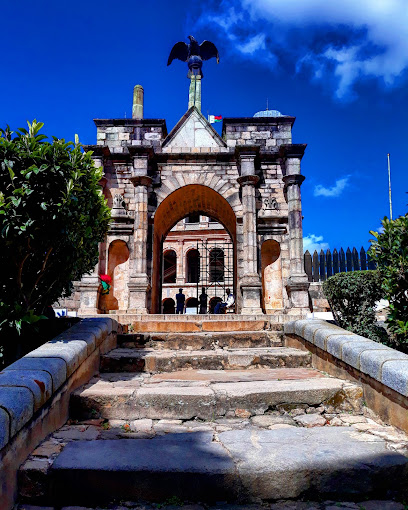
Madagascar Photography Museum
Discover Madagascar's rich culture and stunning landscapes through captivating photography at the Madagascar Photography Museum in Antananarivo.
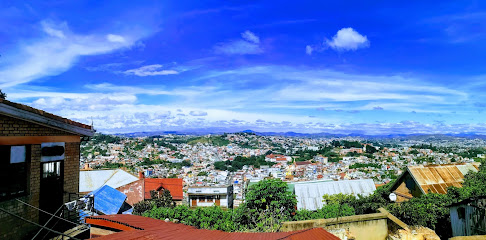
Cathedrale catholique d Andohalo
Discover the enchanting Cathedrale catholique d'Andohalo in Antananarivo, a stunning architectural marvel that reflects Madagascar's rich cultural heritage.

Andafiavaratra Palace
Discover the royal history of Madagascar at Andafiavaratra Palace, a stunning museum nestled in Antananarivo's vibrant heart.
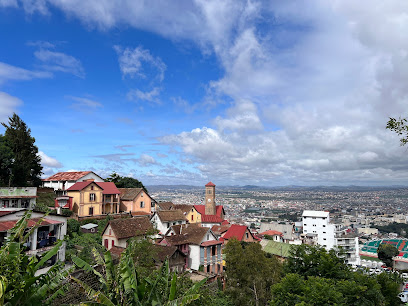
Monument de l’Ange Noir
Explore the historical and cultural significance of the Monument de l’Ange Noir, a captivating landmark in Antananarivo, Madagascar.
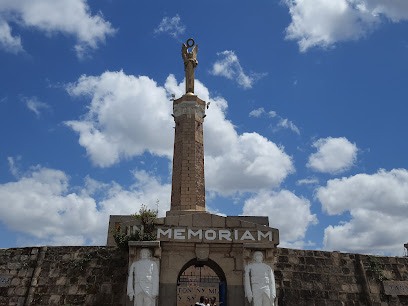
Pirates Museum
Explore the intriguing world of piracy at the Pirates Museum in Antananarivo, showcasing artifacts and engaging exhibits for all ages.
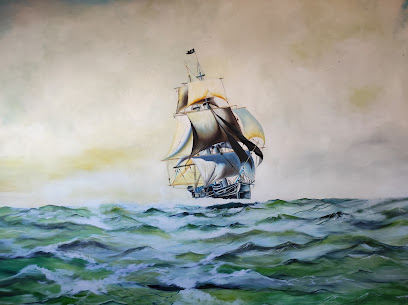
School Modern Ampefiloha
Discover the academic spirit of Madagascar at School Modern Ampefiloha, where tradition meets modern education in the heart of Antananarivo.

EKAR Faravohitra
Experience the architectural splendor and cultural significance of EKAR Faravohitra, a must-see Catholic church in the heart of Antananarivo, Madagascar.
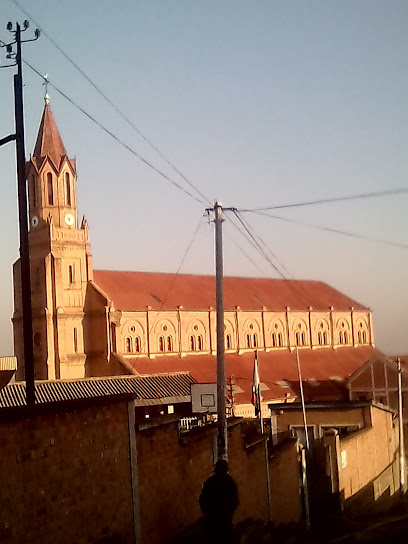
Maison de Jean Laborde
Discover the historical essence of Madagascar at Maison de Jean Laborde, a captivating glimpse into the life of a significant Malagasy figure.
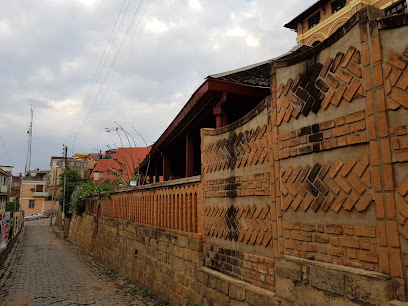
Ambohitsorohitra Palace
Explore the majestic Ambohitsorohitra Palace in Antananarivo, a historical landmark showcasing Madagascar's royal heritage and unique architecture.
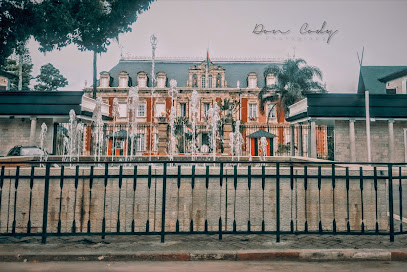
T-T MADADISCOVER
Explore the vibrant culture and captivating history at T-T MADADISCOVER, a must-visit tourist attraction in Antananarivo, Madagascar.

St. Lawrence Anglican Cathedral Ambohimanoro
Discover the serene beauty and historical significance of St. Lawrence Anglican Cathedral in Ambohimanoro, a must-see spiritual landmark in Antananarivo.
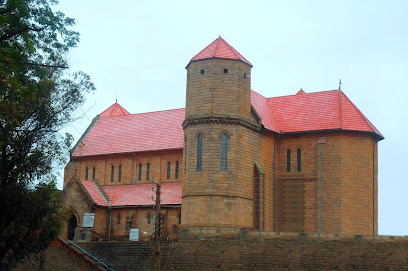
Ampefiloha
Explore the serene beauty of Ampefiloha, a charming villa in Antananarivo, rich in culture and history, offering a peaceful retreat amidst lush gardens.

Anjely mainty
Discover the profound history and cultural significance of Anjely mainty, a poignant monument in Antananarivo, Madagascar.

Temple FJKM
Discover the spiritual essence of Madagascar at Temple FJKM, a stunning architectural marvel nestled in the heart of Antananarivo, inviting visitors to explore its rich cultural heritage.

Unmissable attractions to see
Tsimbazaza Zoo and Botanical Gardens
Explore Madagascar's unique biodiversity at Tsimbazaza Zoo and Botanical Gardens in Antananarivo, a captivating blend of wildlife and natural beauty.
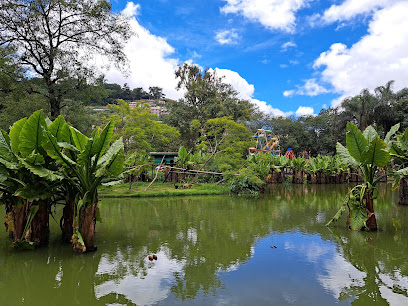
Madagascar Photography Museum
Explore the beauty of Madagascar through the lens at the captivating Photography Museum in Antananarivo, showcasing local talent and stunning visuals.

Croc Farm Conservatoire Botanique de Madagascar
Explore the rich biodiversity of Madagascar at Croc Farm, a unique botanical garden and animal park showcasing the island's endemic wildlife.
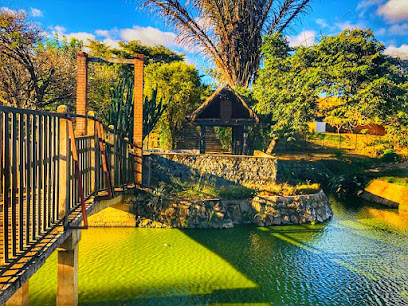
Andafiavaratra Palace
Explore the historical Andafiavaratra Palace in Antananarivo, a museum showcasing the royal heritage and culture of Madagascar.
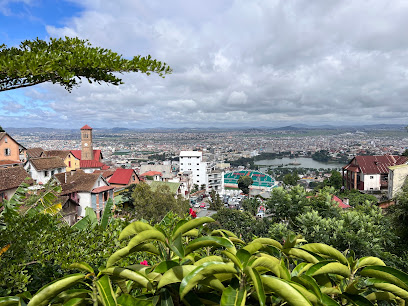
Tsarasaotra Park
Explore the serene beauty of Tsarasaotra Park, a lush urban oasis in Antananarivo, perfect for birdwatching and relaxation.
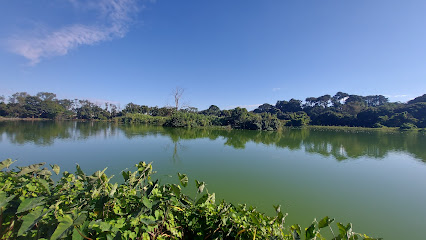
Pirates Museum
Uncover the thrilling world of piracy at the Pirates Museum in Antananarivo, where history and adventure come alive through captivating exhibits.
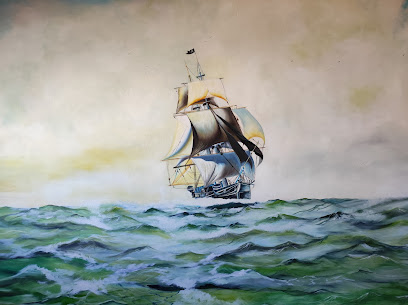
Sam Run
Discover the exhilarating world of Sam Run, Antananarivo's premier amusement park, perfect for family fun and unforgettable adventures.
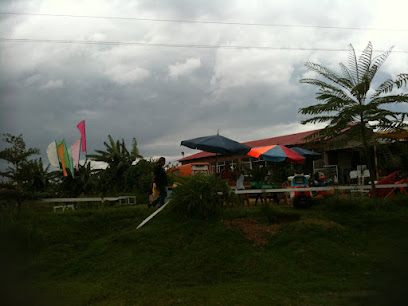
T-T MADADISCOVER
Discover the vibrant culture and heritage of Madagascar at T-T MADADISCOVER in Antananarivo, a must-visit tourist attraction.

Viewpoint (Staircase leading up to the cathedral)
Discover breathtaking views of Antananarivo from the cathedral staircase viewpoint, a captivating blend of culture, history, and stunning landscapes.

Essential places to dine
Chantaco
Experience authentic Malagasy cuisine at Chantaco in Antananarivo - a culinary delight blending local flavors with international flair.

Le Pourquoi Pas
Savor authentic Malagasy flavors at Le Pourquoi Pas in Antananarivo - a culinary gem showcasing the best of Madagascar's cuisine.
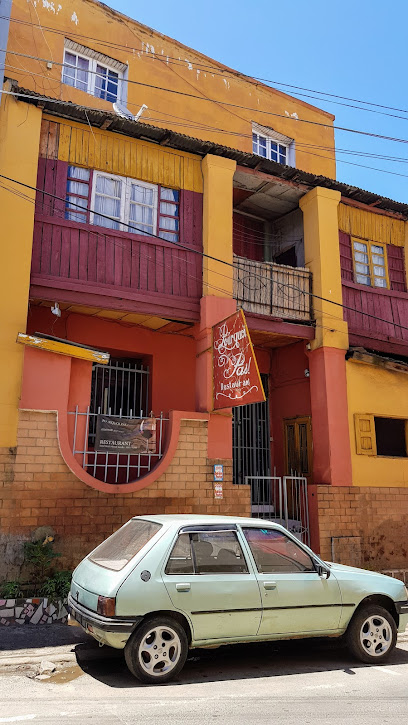
Vikoviko
Experience the vibrant flavors of Madagascar at Vikoviko, where traditional cuisine meets modern dining in Antananarivo.
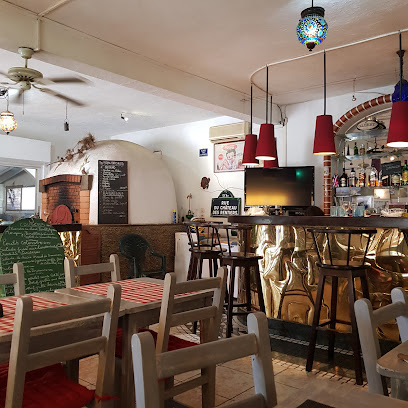
Le kiosque food
Experience authentic Malagasy cuisine at Le Kiosque Food – a culinary haven in Antananarivo that delights every palate.
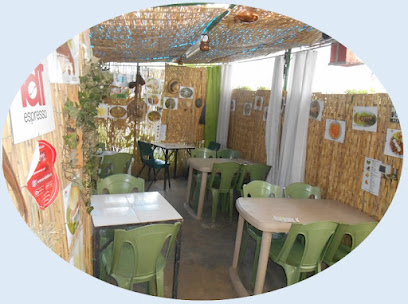
Fraise Halal
Experience the authentic taste of Madagascar at Fraise Halal, where delicious halal cuisine meets warm hospitality in Antananarivo.
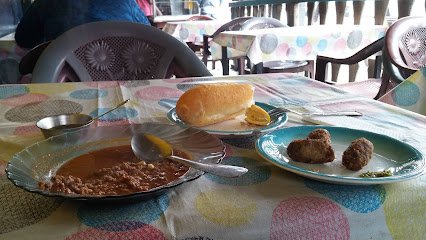
Le Prestige
Experience authentic Malagasy flavors at Le Prestige in Antananarivo - where culinary excellence meets local charm.
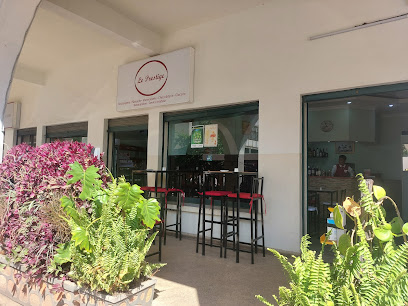
Oasis de Tana by Carlton Madagascar
Discover the vibrant flavors of Madagascar at Oasis de Tana by Carlton Madagascar—an exquisite dining experience in Antananarivo.
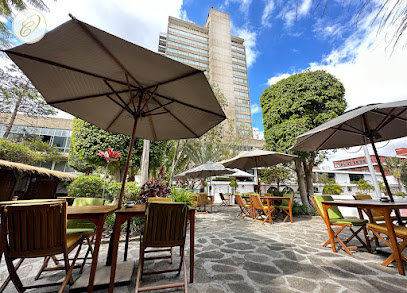
ÔCG Ô Chinois Gourmand
Savor authentic Chinese cuisine at ÔCG Ô Chinois Gourmand in Antananarivo, where flavor meets tradition in a delightful dining experience.

TORTITAS.mg
Discover the rich flavors of Madagascar at TORTITAS.mg in Antananarivo – where culinary tradition meets contemporary dining.
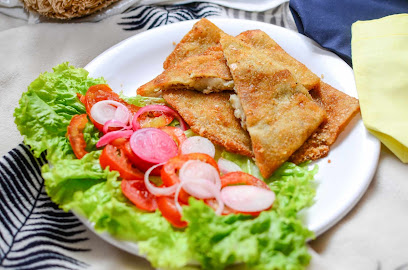
Prep's
Discover authentic Malagasy cuisine at Prep's in Antananarivo – where every dish tells a story of tradition and flavor.

Markets, malls and hidden boutiques
Kudéta Shop
Explore Kudéta Shop in Antananarivo for exceptional Malagasy souvenirs, showcasing the island's rich artistry and cultural heritage.
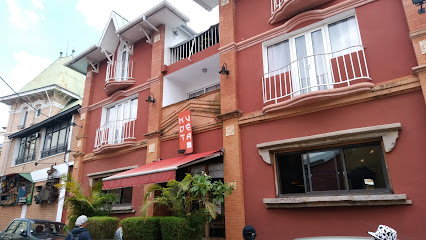
Ô Chaud & Tia Perso
Explore Ô Chaud & Tia Perso, a vibrant gift shop in Antananarivo, offering unique local crafts and souvenirs that celebrate Madagascar's rich culture.
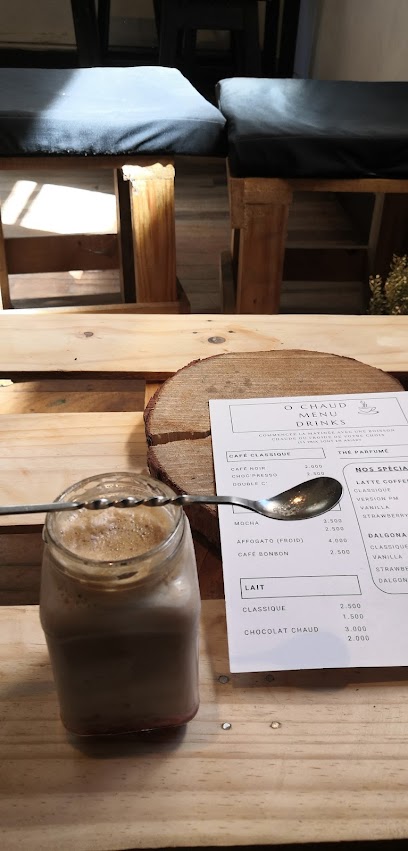
Fusion Gift&déco
Discover unique Malagasy handicrafts and souvenirs at Fusion Gift&déco, a charming gift shop in Antananarivo celebrating local culture and artistry.
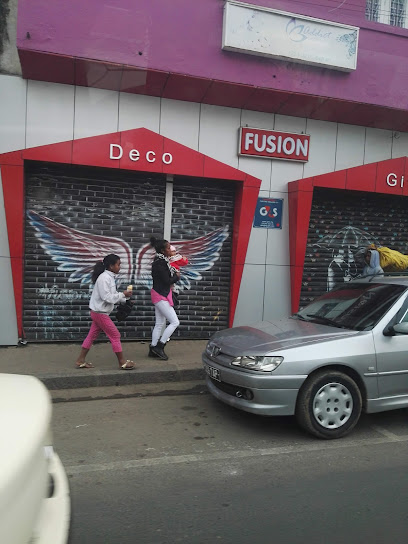
Akany Concept Store
Explore the vibrant Akany Concept Store in Antananarivo for unique Malagasy crafts, fashion, and unforgettable souvenirs reflecting Madagascar's rich culture.
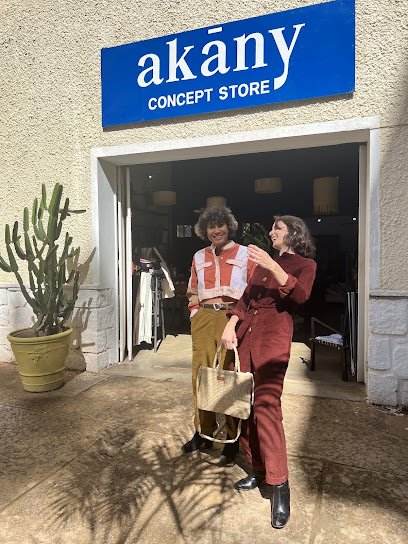
Artiflora Madagascar
Explore the artistry of Madagascar at Artiflora Madagascar, your go-to gift shop for unique souvenirs and local crafts in Antananarivo.
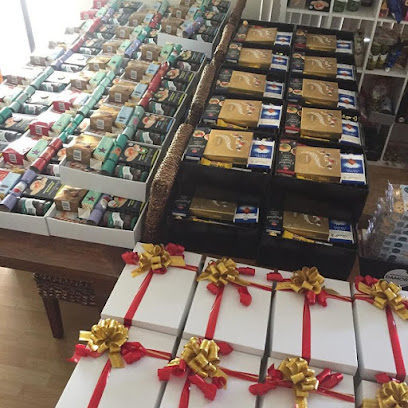
Aloalo Fleurs & Décorations
Explore the vibrant floral artistry and unique local crafts at Aloalo Fleurs & Décorations in Antananarivo, Madagascar.
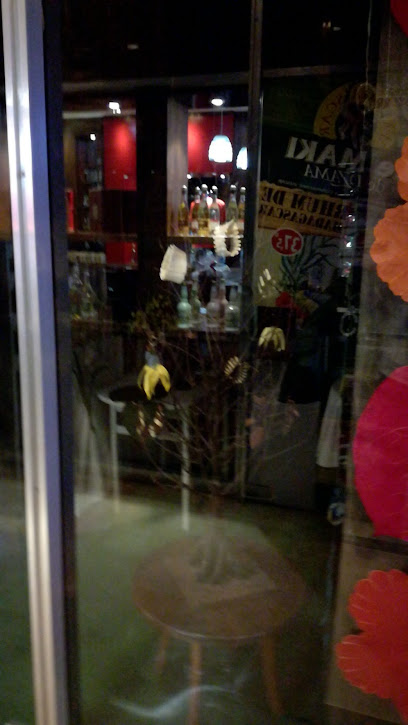
Saffron Boutique
Explore the vibrant Saffron Boutique in Antananarivo for unique Malagasy crafts, fashion, and an immersive shopping experience.
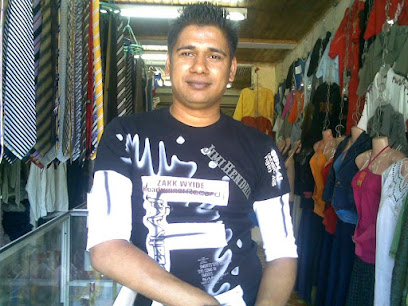
Rideaux & déco de rêve Ampefiloha
Explore unique home decor treasures at Rideaux & Déco de Rêve Ampefiloha in Antananarivo, where every piece tells a story.

Faaynawa fashionMode Ii
Explore the vibrant fashion scene at Faaynawa FashionMode Ii, where local elegance meets contemporary style in Antananarivo.
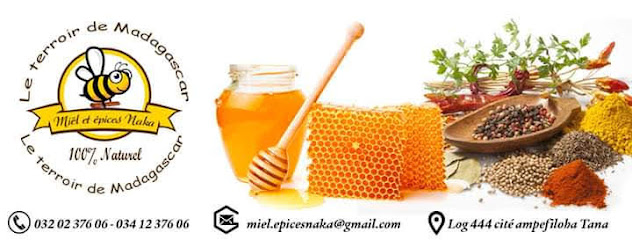
BOUTIQUE MA COLLECTION
Explore the vibrant fashion scene of Antananarivo at Boutique Ma Collection, where local artistry meets contemporary style.

Essential bars & hidden hideouts
No Comment BAR
Experience the vibrant atmosphere and exquisite tapas at No Comment BAR in Antananarivo, where local flavors meet a lively nightlife.
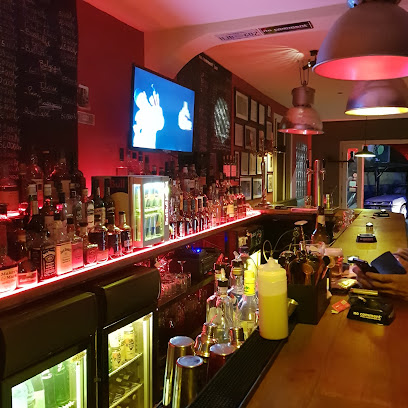
Mojo Bar Tana
Experience the vibrant nightlife of Antananarivo at Mojo Bar Tana, a cozy lounge offering a taste of Madagascar's local culture and drinks.
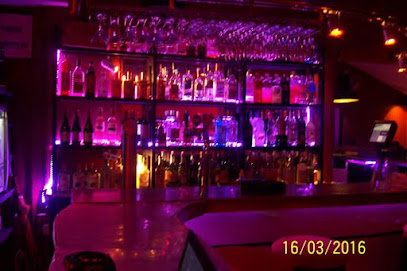
Old 7 bar
Discover the vibrant nightlife of Antananarivo at Old 7 Bar, where unforgettable moments and delightful drinks await.
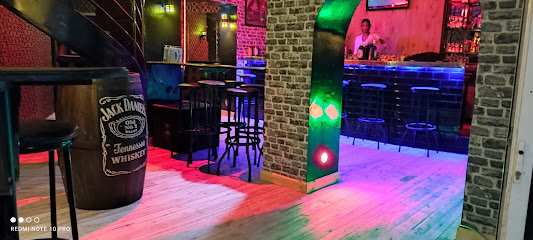
Le Hub
Experience the vibrant atmosphere of Le Hub in Antananarivo, where delicious cuisine meets a lively bar scene and cozy hotel accommodations.

Manson by Marco
Discover the lively atmosphere of Manson by Marco, a charming pub in Antananarivo, where local flavors meet vibrant culture.
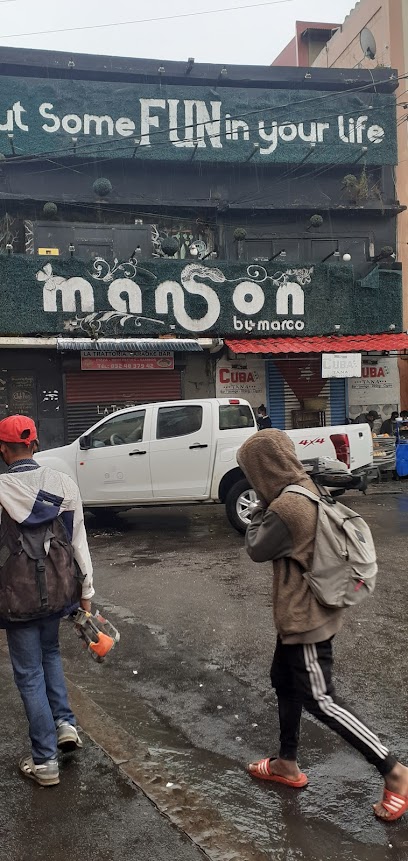
Fida'S Grill
Experience the vibrant flavors of Madagascar at Fida's Grill, a must-visit lounge in Antananarivo offering authentic local cuisine and warm hospitality.

Garage rock café
Discover the vibrant nightlife of Antananarivo at Garage Rock Café – a cocktail bar blending rock music with local flavors for an unforgettable experience.
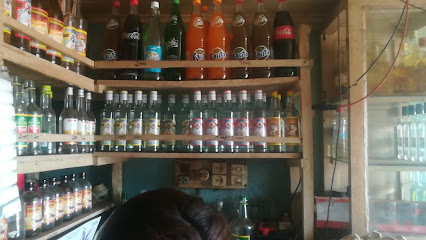
World Citizen Bar
Experience the lively spirit of Madagascar at World Citizen Bar, a social hub in Antananarivo offering refreshing drinks and vibrant atmosphere.

Arinay
Experience the vibrant nightlife of Antananarivo at Arinay, a cultural bar blending local flavors and lively ambiance.

Queens hotely Ahinay
Explore the lively ambiance of Queens Hotely Ahinay in Antananarivo, where refreshing drinks meet vibrant Malagasy culture.

Local Phrases
-
- HelloSalama
[sah-lah-mah] - GoodbyeVeloma
[veh-loh-mah] - YesEny
[eh-ny] - NoTsisy
[tsee-si] - Please/You're welcomeAzafady
[ah-zah-fah-dy] - Thank youMisaotra
[mee-sah-oo-trah] - Excuse me/SorryAzafady
[ah-zah-fah-dy] - How are you?Manao ahoana ianao?
[mah-now ah-wah-nah yah-now] - Fine. And you?Tsara. Ary ianao?
[tsah-rah ah-ree yah-now] - Do you speak English?Miteny Anglisy ve ianao?
[mee-teh-ny ah-nglee-see veh yah-now] - I don't understandTsy nifankahalala
[tsee nee-fahn-kah-hah-lah-lah]
- HelloSalama
-
- I'd like to see the menu, pleaseTe-ho avy ny menio, azafady
[teh-hoo ah-vy nee may-nyoo, ah-zah-fah-dy] - I don't eat meatTsy mifoka hena aho
[tsee mee-foo-kah hay-nah ah-hoo] - Cheers!Misaotra!
[mee-sah-oo-trah] - I would like to pay, pleaseTe-ho fandoavam-bola, azafady
[teh-hoo fahn-doo-ah-vahm-boo-lah, ah-zah-fah-dy]
- I'd like to see the menu, pleaseTe-ho avy ny menio, azafady
-
- Help!Fandrosoana!
[fahn-droh-soo-ah-nah] - Go away!Mivoatra!
[mee-vwah-trah] - Call the Police!Mangataka ny mpitandro ny filaminana!
[mahng-gah-tah-kah nee mpee-tahnd-roh nee fee-lah-mee-nah-nah] - Call a doctor!Mangataka dokotera!
[mahng-gah-tah-kah doh-koh-teh-rah] - I'm lostTsy voatanisa aho
[tsee vwah-tah-nee-sah ah-hoo] - I'm illTsy mandeha aho
[tsee mahn-day-hah ah-hoo]
- Help!Fandrosoana!
-
- I'd like to buy...Te-ho hanina...
[teh-hoo hah-nee-nah] - I'm just lookingMamaky ihany aho
[mah-mah-ky ee-hah-ny ah-hoo] - How much is it?Ahoana io?
[ah-wah-nah ee-oh] - That's too expensiveMahafinaritra be io
[mah-hah-fee-nah-ree-trah beh ee-oh] - Can you lower the price?Azonao ve ny fandoavam-bola?
[ah-zoo-now veh nee fahn-doo-ah-vahm-boo-lah]
- I'd like to buy...Te-ho hanina...
-
- What time is it?Ahoana no herinandro?
[ah-wah-nah noh hay-ree-nahn-droh] - It's one o'clockEo ambin'ny iray
[eh-oh ahm-been-ny ee-ry] - Half past (10)Efatra sy amby folo
[eh-fah-trah see ahm-bee foh-loh] - MorningMaraina
[mah-rah-een-ah] - AfternoonAlina
[ah-lee-nah] - EveningHariva
[hah-ree-vah] - YesterdayOmaly
[oh-mah-ly] - TodayAnio
[ah-nyoh] - TomorrowRehefa androany
[reh-heh-fah ahn-droh-ah-ny] - 1Iray
[ee-ry] - 2Roa
[roo] - 3Telo
[tay-loo] - 4Efatra
[eh-fah-trah] - 5Dimy
[dee-mee] - 6Enina
[eh-nee-nah] - 7Fito
[fee-too] - 8Valo
[vah-loo] - 9Sivy
[see-vy] - 10Folo
[foh-loh]
- What time is it?Ahoana no herinandro?
-
- Where's a/the...?Aiza ny...
[ah-ee-zah nee] - What's the address?Inona ny adiresy?
[ee-noo-nah nee ah-dee-reh-see] - Can you show me (on the map)?Azonao ve hitady ahy (amin'ny sarita)?
[ah-zoo-now veh hee-tah-dy ah-hy ah-meen-ny sah-ree-tah] - When's the next (bus)?Rehefa hivarotra indray (bus)?
[reh-heh-fah hee-vah-roh-trah eend-ry (boos)] - A ticket (to ....)Ny fitaovana (ho...)
[nee fee-tah-oo-vah-nah (hoo)]
- Where's a/the...?Aiza ny...
History of Ampefiloha
-
Ampefiloha, like much of Antananarivo, has roots that trace back to the 16th century when it was part of the Imerina Kingdom. The area was initially settled by the Merina people, who established agricultural practices and built their society around the rich resources of the region.
-
During the early 19th century, Ampefiloha became increasingly significant as the Merina Kingdom expanded under King Andrianampoinimerina. The area served as a strategic point in the consolidation of power, aiding the unification of Madagascar and the centralization of authority in Antananarivo.
-
With the arrival of French colonial forces in the late 19th century, Ampefiloha underwent significant changes. The French expanded infrastructure in the area, introducing new roads and public buildings, which altered the landscape and the socio-economic dynamics of the neighbourhood.
-
In the post-colonial period, Ampefiloha emerged as a vibrant cultural hub within Antananarivo. It became known for its lively markets, traditional music, and dance performances, reflecting the rich cultural tapestry of Madagascar, where local customs and practices thrived amid modernization.
-
In recent decades, Ampefiloha has experienced rapid urbanization, with new residential developments and commercial establishments sprouting up. This growth has led to a blend of traditional Malagasy culture with contemporary urban life, making Ampefiloha a unique microcosm of Antananarivo's evolution.
Ampefiloha Essentials
-
Ampefiloha is easily accessible from other neighborhoods in Antananarivo. You can take a taxi-brousse (shared taxi) from the central taxi-brousse station to reach Ampefiloha. Alternatively, local taxis and tuk-tuks are widely available throughout the city and can take you directly to Ampefiloha. If you are coming from the Ivato International Airport, a taxi ride will take approximately 30-45 minutes, depending on traffic.
-
Ampefiloha is best explored on foot due to its compact nature. However, for longer distances, you can use local buses or taxi-brousses that run frequently along main roads. Bicycles are also an option, but be cautious of traffic. Taxis are relatively inexpensive and can be hailed from the street or booked via local services.
-
While Ampefiloha is generally safe for tourists, it is advisable to remain vigilant, especially at night. Areas near the central market can see higher crime rates, so it's best to avoid them after dark. Keep your belongings secure and be cautious when using your phone in public. It is recommended to travel in groups and avoid displaying valuables.
-
In case of an emergency, dial the local emergency number 117 for police assistance or 118 for medical emergencies. It is advisable to have a list of local hospitals and embassies on hand. For minor health issues, pharmacies are available throughout Ampefiloha. Travel insurance that covers emergencies is highly recommended.
-
Fashion: Do dress modestly, especially in religious or conservative areas. Avoid overly revealing clothing. Religion: Do respect local customs and practices; cover your head when entering churches. Public Transport: Do give up your seat to the elderly; don't engage in loud conversations. Greetings: Do greet locals with a friendly smile and handshake; don't assume familiarity. Eating & Drinking: Do savor local dishes; don't waste food or refuse hospitality as it might be seen as disrespectful.
-
To experience Ampefiloha like a local, visit the bustling markets, such as the Analakely Market, where you can find fresh produce and local crafts. Engage with vendors and learn about their goods. Try the street food, especially local delicacies like 'mofo gasy' (Malagasy pancakes). Participating in local festivals can provide insight into Malagasy culture.
Trending Landmarks in Ampefiloha
-
Queen's Palace
-
Madagascar Photography Museum
-
Cathedrale catholique d Andohalo
-
Andafiavaratra Palace
-
Monument de l’Ange Noir
-
Pirates Museum
-
School Modern Ampefiloha
-
EKAR Faravohitra
-
Maison de Jean Laborde
-
Ambohitsorohitra Palace
-
T-T MADADISCOVER
-
St. Lawrence Anglican Cathedral Ambohimanoro
-
Ampefiloha
-
Anjely mainty
-
Temple FJKM
Nearby Cities to Ampefiloha
-
Things To Do in Andasibe
-
Things To Do in Antsirabe
-
Things To Do in Toamasina
-
Things To Do in Fianarantsoa
-
Things To Do in Manakara
-
Things To Do in Mahajanga
-
Things To Do in Majunga
-
Things To Do in Ifaty
-
Things To Do in Nosy Be
-
Things To Do in Toliara
-
Things To Do in Mandrare River
-
Things To Do in Fort Dauphin
-
Things To Do in Chirongui
-
Things To Do in Bandrele
-
Things To Do in Dembeni

